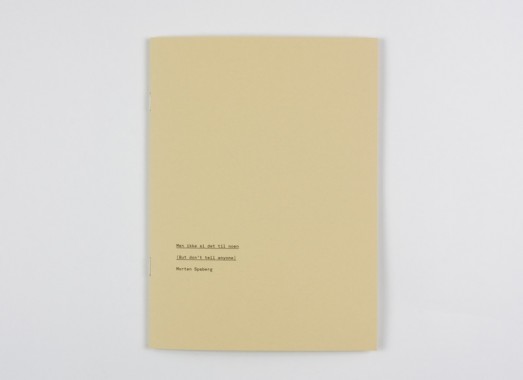
Morten Spaberg, Men ikke si det til noen (But don’t tell anyone)
Softcover, 20 pp., offset 1/1, 150 x 210 mm
Edition of 500
Published by Aki Books
$9.00 ·
Aki Book No. 2
Aki Books, Distribution, Morten Spaberg, Photography
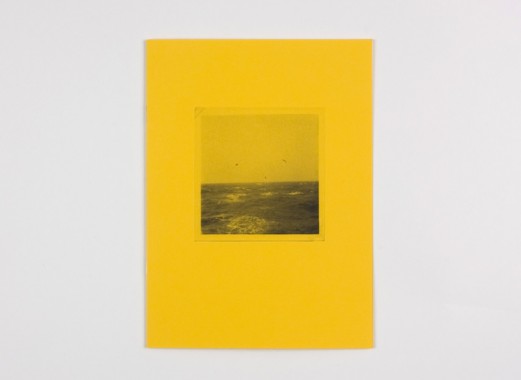
Aslak Gurholt Rønsen, Summer of 66
Softcover, 12 pp., offset 1/1, 150 x 210 mm
Edition of 500
Published by Aki Books
$9.00 ·
Aki Book No. 1
Aki Books, Art, Aslak Gurholt Rønsen, Distribution, Photography
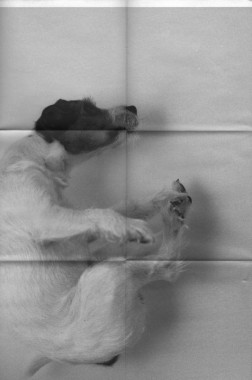
Morten Spaberg, Aki Books Poster, offset poster, 500 × 700 mm (above: folded, 250 x 350 mm)
Morten Spaberg, Aki Books Poster
Poster, offset 1/0, 500 x 700 mm
Edition of 500
Published by Aki Books
$5.00 ·
Aki Poster No. 1
Aki Books, Distribution, Morten Spaberg, Photography
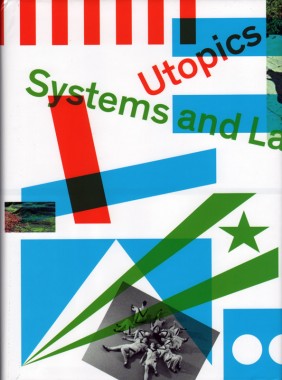
Simon Lamunière, Utopics: Systems and Landmarks
Hardcover, 160 pp., offset 4/4, 160 x 220 mm
Edition of 2000
ISBN 978-3-03764-056-2
Published by JRP|Ringier
$45.00 ·
This publication examines the spaces, nations, and communities created by artists or indivuals to develop alternative modes of living. Throughout history individuals have continuously developed systems based on a mix of reality, fiction, and mediatization, create micro-nations, or fight for their existence. All these proposals are simultaneously real and utopic. By inventing identity signs (IDs, flags, constitutions, currencies, etc.), by practicing their beliefs (be it through dance, naturism, terrorism, or collectivism), and by working on the boundaries of reality (parallel worlds, isolationism, new territories, etc.), these proposals are challenging our definitions of normalcy and territoriality. The title
Utopics is itself the free contraction of utopias, you, topic, topos, and pics.
Conceived as a glossary, the book includes artists such as Le Bélier, Carsten Höller, Clemens von Wedemeyer, Fabrice Gygi, General Idea, Lang/Baumann, Matt Mullican, Mai-Thu Perret, NSK (Irwin), Peter Coffin, Steiner & Lenzlinger, Superflex, as well as intitiatives such as La République Géniale (Robert Filliou), State of Sabotage (Robert Jelinek), micro-nations, L’Ecole de Stéphanie, etc.
Andrea Zittel, Anthroposophy, Architecture, Art, Betty Stocker, Buckminster Fuller, Carsten Höller, Clemens von Wedemeyer, Criticism, DAP, Fabienne Bideau, Fabrice Gygi, General Idea, Ildiko Dao, James Turrell, JRP|Ringier, Landmarks, Lang/Baumann, Le Bélier, Liam Gillick, Mai-Thu Perret, Matt Mullican, Nicolas Bourriaud, NSK (Irwin), Peter Coffin, Philippe Parreno, Photography, Pics, Pictures, Rirkrit Tiravanija, Rudoph Steiner, Simon Lamunière, Steiner & Lenzlinger, Superflex, Systems, Theory, Topic, Topos, Utopias, Waldorf
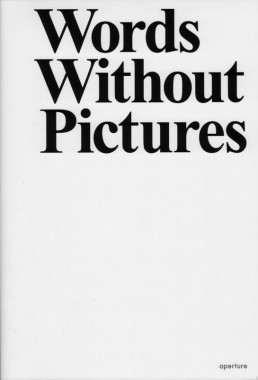
Alex Klein, Words Without Pictures
Softcover, 510 pp., offset 1/1, 5.75 x 8.25 inches
Edition of 2000
ISBN 978-1-5971114-2-3
Published by Aperture/LACMA
$25.00 ·
Words Without Pictures was originally conceived by curator Charlotte Cotton and artist Alex Klein as a means of creating spaces for discourse around current issues in photography. Every month for a year, beginning in November 2007, an artist, educator, critic or curator was invited to contribute a short unillustrated essay about an aspect of emerging photography. Each piece was available on the Words Without Pictures
website for one month and was accompanied by a discussion forum focused on its specific topic. Over the course of its month-long “life,” each essay received both invited and unsolicited responses from a wide range of interested parties. All of these essays, responses and other provocations are gathered together here. Previously issued as a print-on-demand title, we are pleased to present
Words Without Pictures to the trade for the first time as part of the
Aperture Ideas series.
A. L. Steiner, Alex Klein, Alex Slade, Allan McCollum, Allen Ruppersberg, Amir Zaki, Amy Adler, Anthony Pearson, Aperture, Art, Arthur Ou, Carter Mull, Charlie White, Charlotte Cotton, Christopher Bedford, Criticism, DAP, Darius Himes, David Reinfurt, Dexter Sinister, George Baker, Harrell Fletcher, James Welling, Jason Evans, John Divola, Kevin Moore, LACMA, Leslie Hewitt, Marisa Olson, Mark Wyse, Michael Queenland, Miranda Lichtenstein, Paul Graham, Penelope Umbrico, Photography, Sarah Charlesworth, Shannon Ebner, Sharon Lockhart, Soo Kim, Sze Tsung Leong, Theory, Walead Beshty, Wallis Annenberg Photography Department
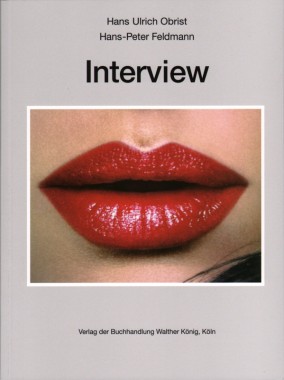
Hans Ulrich Obrist and Hans-Peter Feldmann, Interview
Softcover, 130 pp., offset 4/1, 165 x 220 mm
English and German
Edition of 2000
ISBN 978-3-86560-660-0
Published by Walther König
$49.00 ·
Hans Ulrich Obrist and Hans-Peter Feldmann, who have known each other for around 20 years, talked about the possibility of an interview for quite some time. They finally decided that Obrist pose the questions in writing, and Feldmann answer each of them with a picture.
Art, DAP, Hans Ulrich Obrist, Hans-Peter Feldmann, Interview, Photography, Pictures, Walther König
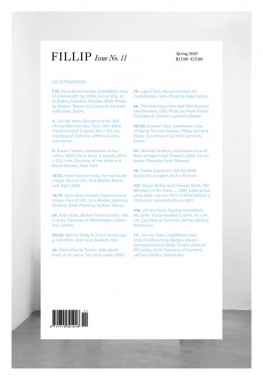
fillip 11
Softcover, 120 pp., offset 4/1, 170 x 245 mm
Edition of 2000
ISSN 1715-3212
Published by Fillip
$15.00 ·
Inaugurating a new, bound format that remains true to its broadsheet roots, Fillip’s Spring 2010 issue features Lawrence Rinder on painting and politics, Keith Bormuth on Jean-Luc Godard’s
2 ou 3 choses que je sais d’elle, and Berlin-based artist Haris Epaminonda in conversation with Danish curator Jacob Fabricius. Other long form reviews and essays are provided by Liz Park, Renato Rodrigues da Silva, and Arni Haraldsson, amongst others.
The issue also features Dear Silvia…July 2009, an artist pamphlet by Silvia Kolbowski that compliments the artist’s audio work of the same name commissioned by Fillip for the Living Clay Art Writing Readings series at Whitechapel, London, last Fall:
Silvia Kolbowski, Dear Silvia…July 2009
Softcover, 16 pp., offset 3/3, 120 x 180 mm
Edition of 2300
ISBN 978-0-9738133-8-8
Published by Fillip
Arni Haraldsson, Art, Criticism, Distribution, Fillip, Haris Epaminonda, Jacob Fabricius, Keith Bormuth, Lawrence Rinder, Park, Photography, Renato Rodrigues da Silva, Silvia Kolbowski, Theory
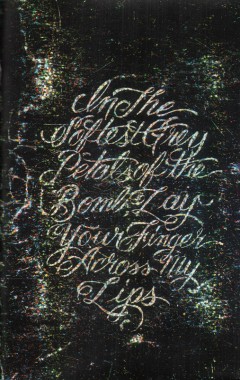
Dash Snow, In The Softest Grey Petals of the Bomb, Lay Your Finger Across My Lips
Softcover, 32 pp., digital 4/1, 5.25 x 8.25 inches
Edition of 300
Published by Peres Projects
out of print
Handmade saddle stitched booklet/zine of the artists photographs.
Art, Culture, Dash Snow, Peres Projects, Photography
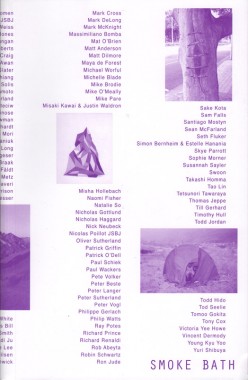
Peter Sutherland, Smoke Bath
Softcover, 328 pp., offset 1/1, 5.25 x 8 inches
Edition of 500
ISBN 978-0-98259360202
Published by Seems
out of print
Smoke Bath is a collection of photographs and art work loosely based on the theme of camping, nature, and exploring.
The goal of Smoke Bath is to showcase the work of artists that are inspired by nature and raise money for freshair.org in the process. The Fresh Air Fund (freshair.org) is an independent, not-for-profit agency that provides free summer vacations to New York City children from low-income communities.
Abby Portner, Ahndraya Parlato, Ajit Chauhan, Albert Maysles, Alec Soth, Alex Sturrock, Alexander Binder, Ali Bosworth, Andre Simmons, Andrew Guenther, Andrew Laumann, Andrew N Shirley, Andrew Sutherland, Angela Boatwright, Anya Jasbar, Aram Tanis, Arik Roper, Ariko Inaoka, Art, Aurelian Arbet JSBJ, Beezer, Ben Pier, Boogie, Brad Troemel, Brion Nuda Rosch, Cali DeWitt, Camille Vivier, Carola Bonfili, Cheryl Dunn, Chris Johanson, Christian Belgaux, Christian Patterson, Coley Brown, Collier Schorr, Culture, Dana Goldstein, David Aron, David Potes, Distribution, Dominic Neitz, Donniella Davy, Dylan Reece, Ed Templeton, Eden Batki, Erik Kessels, Erik Van Der Weijde, Fabian Zapatka, Francine Spiegel, Fumie Ishii, Gary Trinh, Gerhard Stochl, Gregory Halpern, Hamilton Morris, Henk Wildschut, Ian Helwig, Irinia Rozovsky, Jack Greer, Jason Lee, Jason Polan, Jeff Luker, Jennifer Shear, Jennilee Marigomen, Jeremie Egry JSBJ, Jeremy & Claire Weiss, Jeremy Jones, Jim Mangan, Joe Roberts, Jonnie Craig, Jordan Awan, Josh Slater, Julia Chiang, Julia Solis, Junichi Sakamoto, Justine Kurland, Kate Steciw, Keiko Ichinose, Kelie Bowman, Kelly Reichardt, Kento Mori, Kevin Romaniuk, Kevin Spanky Long, Kevin Trageser, Kevin van Braak, Klara Källström & Thobias Fäldt, Landon Metz, Lele Saveri, Lester B Morrison, Lindsey Elsaesser, Lindsey White, Linus Bill, Luke Barber-Smith, Madi Ju, Maggie Lee, Marius Nilsen, Mark Borthwick, Mark Cross, Mark DeLong, Mark McKnight, Massimiliano Bomba, Mat O'brien, Matt Anderson, Matt Dilmore, Maya de Forest, Michael Worful, Michelle Blade, Mike Brodie, Mike O'Meally, Mike Pare, Misaki Kawai & Justin Waldron, Misha Hollebach, Naomi Fisher, Natalie So, Nicholas Gottlund, Nicholas Haggard, Nick Neubeck, Nicolas Poillot JSBJ, Oliver Sutherland, Patrick Griffin, Patrick O'Dell, Paul Schiek, Paul Wackers, Pete Volker, Peter Beste, Peter Langer, Peter Sutherland, Peter Vogl, Philip Watts, Philippe Gerlach, Photography, Ray Potes, Richard Prince, Richard Renaldi, Rob Abeyta, Robin Schwartz, Ron Jude, Sake Kota, Sam Falls, Santiago Mostyn, Sean McFarland, Seems, Seth Fluker, Simon Bernheim & Estelle Hanania, Skye Parrott, Sophie Mörner, Susannah Sayler, Swoon, Takashi Homma, Tao Lin, Tetsunori Tawaraya, Thomas Jeppe, Till Gerhard, Timothy Hull, Tod Seelie, Todd Hido, Todd Jordan, Tomoo Gokita, Tony Cox, Victoria Yee Howe, Vincent Dermody, Young Kyu Yoo
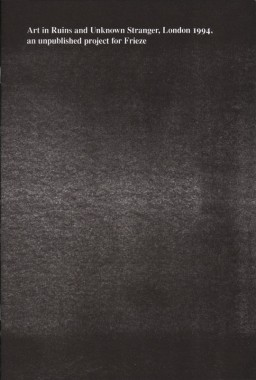
Eva Weinmayr, Art in Ruins and Unknown Stranger, London 1994, an unpublished project for Frieze
Softcover, 16 pp., mimeograph/laser 1/1, 210 x 297 mm
Edition of 300
ISBN 978-0-9562605-2-9
Published by Occasional Papers and FormContent
$8.00 ·
This booklet is published as part of
I Wonder What The Silence is About, a body of work, speculating on the (temporary?) disappearance of Art In Ruins. This English collaborative art practice was formed in 1984 and created a radical stance towards the art world, based on critical post-modern thinking. They have been for a short period omnipresent in the London/Berlin art scene before they fell silent in 2001. I contacted Art In Ruins and asked for permission to reprint one of their publications as part of my project. This they rejected but suggested to publish this interview instead, which was initially written for
Frieze Magazine in 1994. It has not been printed until today.
—Eva Weinmayr
Antony Hudek, Art, Art in Ruins, Distribution, Eva Weinmayr, FormContent, Frieze, Occasional Papers, Photography, Sara De Bondt, Unknown Stranger
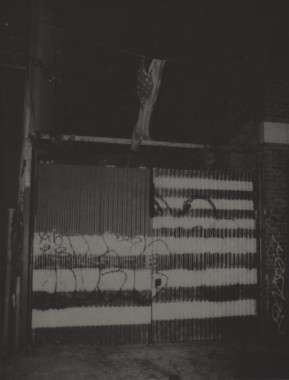
Georg Gatsas, Five Points
Softcover, 48 pp., offset 4/1, 195 x 255 mm
Edition of 1000
ISBN 978-3-905714-72-2
Published by Nieves
$24.00 ·
What makes Georg Gatsas’ work particularly significant is that it is a historical document. This approach puts the art back into artifact. Now we are looking at his images much in the way others must have looked at images of people in the same places over one hundred years ago. I enjoy imagining someone like Georg Gatsas in one hundred years looking at the book you are reading now, I wonder what they might have to say or might be able to learn about these places, people and things.
—James Fuentes
Art, Culture, Distribution, Georg Gatsas, James Fuentes, Nieves, Photography
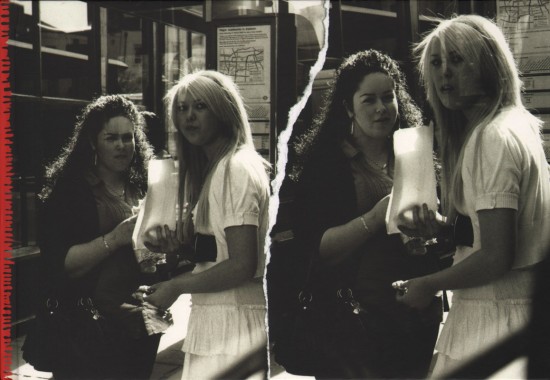
Ed Templeton, The Seconds Pass
Hardcover, 154 pp., offset 4/4, 11 x 7.75 inches
Edition of 1000
ISBN 978-0-9825936-1-5
Published by Seems
$52.00 ·
There is a scribble of asphalt and meandering ribbons of concrete tangled all over North America in a contiguous line of material that connects each of us to whomever else is also in contact. I sometimes marvel at this, walking from my front door and standing on the asphalt looking down at its grimy blackness, wishing I could rest my ear down on it and hear everything like the Indians in an old western film. The pavement I’m standing on is connected to other pavement, concrete, or steel to almost anywhere I can think of. Certainly everywhere you can drive to. Someone in Burnt Church, Tennessee is standing on gravel that is connected by touch to my street, just like someone is in Halifax, Nova Scotia. I can be in New York City in 3 days from my home in the suburban sprawl of Orange County, California without ever touching the earth.
—Ed Templeton
Art, Culture, Distribution, Ed Templeton, Photography, Seems
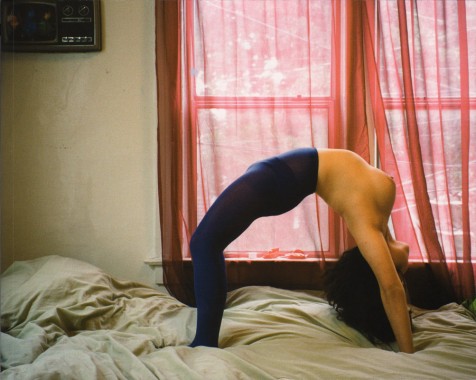
Sandy Kim, Sandy Kim
Softcover, 80 pp., offset 4/4, 10 x 8 inches
Edition of 500
ISBN 978-0-615-32175-2
Published by Unpiano Books
$20.00 ·
Sandy Kim utilizes a highly self-referential style of photography which peers into the tiny microcosm of one woman’s life. Reminiscent of the casual documentary style popularized by Nan Goldin in the Eighties, the photographs in Sandy Kim highlight her life at one particular moment and the people who are revolving in and around it.
—Jesse Pollock
Sandy Kim is pretty short, has a ton of hair, a broken orange backpack and always loses her camera. When that happens, she just gets a disposable and keeps taking pictures. It’s this lackadaisical tenacity that translates into her photos, how they always looked kind of busted but warmly worn in and comfortable. Like many young photographers, she’s made her friends her subjects — landscapes of young women, tattoos and San Francisco fog. But she never lays a soft hand, as if anything flattering in her photos is accidental. That’s not to say her photos are purposefully unappealing or harsh, but simply that they are so often just really gross — honest portraits of much of her daily life. But Sandy’s grossness is completely malleable, sometimes funny, sometimes horrific, sometimes unbelievably lush. Sandy is such a brazen and unafraid woman and that power continually streams strongly in her photos, across all spectrums of feeling and subject. Throughout Sandy Kim, there is a lot of blood, but that blood is never the same — blood on her sheets after sex, blood from a dead body covered in a sterile white sheet, blood on the hand of a friend after an unknown accident. He’s smiling, looking straight at the camera, at Sandy. They both know it will heal.
—Matthew Schnipper
Culture, Distribution, Jesse Pollock, Mark Kaiser, Matthew Schnipper, Nan Goldin, Photography, Sandy Kim, Unpiano Books












